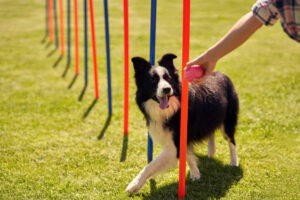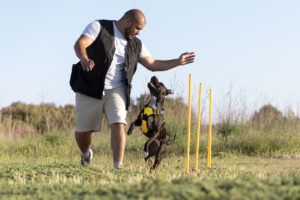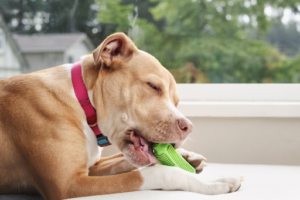Nobody wants their dog to get sick and suffer from ailments that can be prevented. One of the most common diseases in dogs is Giardia.
Giardia is a parasitic single-celled organism that lives in the intestines of mammals, birds, and amphibians. It’s composed of numerous subspecies, some of which can be found in dogs.
Giardia is highly contagious, which means it can easily spread from one dog to another through contact with contaminated feces or water. In this article, we’ll discuss common Giardia symptoms in dogs!
What is Giardia in Dogs?
Giardia in dogs is not often an issue, but when it is, it is quite uncomfortable. We know this as giardiasis. In dogs, the most frequent symptom is diarrhea, same as with humans.
A dog becomes infected with Giardia when it consumes the parasite’s cyst stage, which subsequently clings to the gut wall and feeds on its host. The dog eventually passes infected cysts in its feces. The time it takes for cysts to pass via stool in dogs ranges between 5 and 12 days.
Symptoms of Giardia In Dogs
Diarrhea
Diarrhea can cause dehydration, so make sure your dog always has access to water. Under the supervision of a veterinarian, you may also provide unflavored Pedialyte to assist in maintaining electrolyte balance.
Vomiting
When dogs vomit, they eject the contents of their stomach and upper small intestine, which includes food, liquids, and debris. They generally exhibit indicators of sickness before this unpleasant presentation, such as profuse drooling, retching, and abdominal cramps.
Weight Loss
When weight loss surpasses 10% of normal body weight and is not coupled with fluid loss or dehydration, it is considered clinically significant.
A healthy Golden Retriever weighing a breed-normal seventy pounds, for example, would need to shed more than seven pounds before the weight reduction would be considered clinically significant.
Dehydration
Dehydration happens when your dog loses more water and electrolytes than they take in, and its body begins to break down.
With dogs, it can be a significant problem that can result in renal failure, loss of consciousness, and, in the worst-case scenario, death.
Poor Coat
A dull coat in dogs can be a general warning sign of health problems, but it is most typically an indication of insufficient nutrition. A dog’s hair, like ours, responds to the nutrients (or lack thereof) in its food.
If your dog’s coat appears dull and lifeless, he or she is most certainly not consuming a balanced diet. In many circumstances, your dog’s diet should include additional healthy fats, such as Omega-3s from fish or supplements.
You should consider your dog’s activity and include it in its diet.
Lethargy
Lethargic dogs lose interest in typical daily activities. They become either unable or reluctant to get out of bed on a regular basis. The dog may be weak and unable to move well or maybe stiff and in discomfort when moving.
Conclusion
If you think you see Giardia symptoms in dogs, you need to go to a professional veterinarian. A vet will be able to diagnose and treat the disease. Remember, Giardia can be transferred through feces, so poop tests may have to be repeated. Your pet may look healthy or disease-free until it stops transmitting Giardia. Follow your veterinarian’s advice and bring your pet to all subsequent appointments!
For more information on dog care, check out the Pet Fitness blog!







